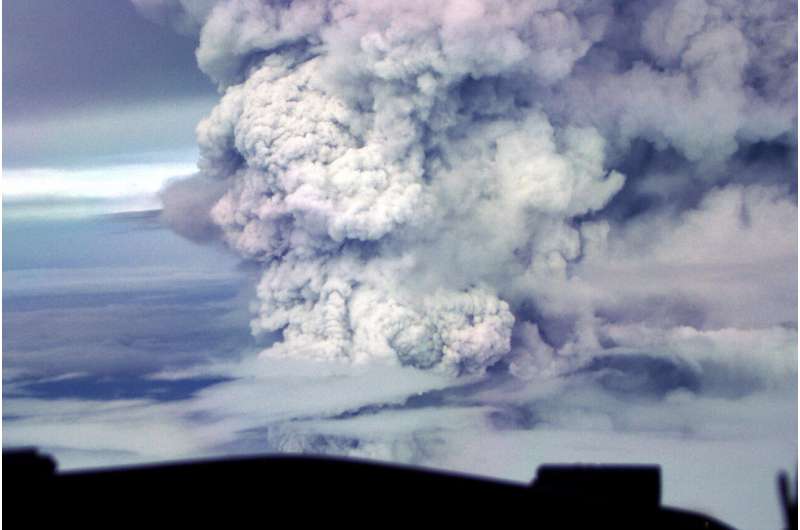This article has been reviewed according to Science X's editorial process and policies. Editors have highlighted the following attributes while ensuring the content's credibility:
fact-checked
reputable news agency
proofread
Eruption of Papua New Guinea volcano subsides though thick ash is billowing 3 miles into the sky

An eruption of Papua New Guinea's tallest volcano that raised regional tsunami fears subsided Tuesday, but thick ash still billowed into the sky and coated roofs and palm trees nearby.
One of the South Pacific nation's most active volcanoes, Mount Ulawun erupted on Monday, spewing ash as high as 15 kilometers (50,000 feet).
Papua New Guinea's Geohazards Management Division said while the eruption had been downgraded since Monday from the maximum alert level, there were no signs that it was ending.
The eruption on the remote northeastern island of New Britain attracted international attention when Japanese authorities announced they were assessing whether tsunami waves could reach the Izu and Ogasawara islands.
But several volcanologists doubt that Ulawun will ever pose such a threat. Papua New Guinea's division said the threat was "nil."
Brad Scott, a volcanologist with the New Zealand research institute GNS Science, said the "tsunami risk is incredibly minor" because the volcano is far from the ocean.
But the volcano, which stands 2,334 meters (7,657 feet) above sea level, remained active and the eruption could continue indefinitely, the division said.
The Papua New Guinea division reported the ash plume rising at least 5,000 meters (16,000 feet) on Tuesday before becoming lost in atmospheric cloud.
The small volcanic particles in ash plumes can be carried long distances by wind and can threaten aviation. A thick plume extended tens of kilometers (miles) to the northwest of Mount Ulawun on Tuesday.
The Civil Aviation Safety Authority of Papua New Guinea did not immediately respond to an email asking if air travel was being affected. The FlightAware tracking website showed normal activity Tuesday at the nearest large airports, in the national capital Port Moresby and in Honiara, the Solomon Islands capital.
The Volcanic Ash Advisory Center in Darwin in northern Australia, around 2,300 kilometers (1,400 miles) to the southwest of Ulawun, was among the first to detect the eruption through satellite technology.
Darwin is one of nine such centers around the globe that provide advice to the aviation industry about the location and movement of potentially hazardous volcanic ash.
The nearest large town is Bialla, which is established among palm oil plantations on Ulawun's slopes 47 kilometers (29 miles) to the southwest, the division said. Hargy Oil Palm Ltd., a company based in Bialla, did not immediately respond to an email request for comment.
The division said heavy coatings of black ash were causing leaves to droop in palm oil plantations near the volcano and were accumulating on roofs.
Bialla has a population of more than 13,000 people, according to the World Bank.
Papua New Guinea sits on the "Ring of Fire," the arc of seismic faults around the Pacific Ocean where much of the world's earthquake and volcanic activity occur. Ulawun has repeatedly erupted since 1700s, and its last major eruption in 2019 led to more than 5,000 people being evacuated.
The division said there were no known casualties from Ulawun's history of eruptions.
But major impacts in terms of population displacement, infrastructure damage and disruption to services were common, the division said.
© 2023 The Associated Press. All rights reserved. This material may not be published, broadcast, rewritten or redistributed without permission.




















